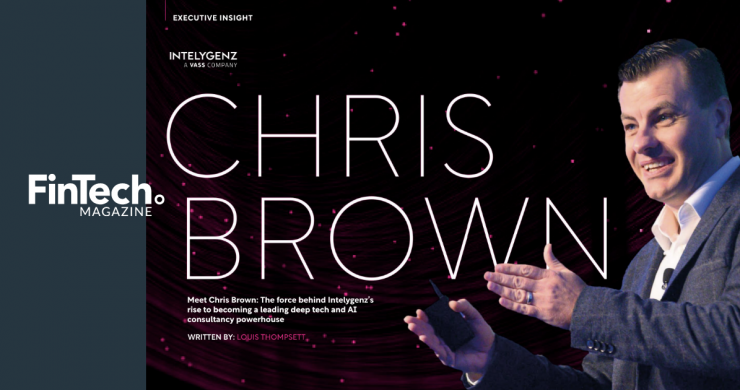How Did We Reduce Our Carbon Footprint?

Tackling climate change is one of the biggest challenges faced by the world today. Though there is undoubtedly a level of responsibility on national governments to protect our environment, there is equal if not more responsibility on both citizens and businesses to do their part in living and working sustainably.
So, how can a global business built on technology such as ours change its behavior and operations to work as sustainably as possible? To answer that question, in 2018 we analyzed the carbon footprint of our whole organization.
Our aim was to measure the volume of greenhouse gases we produce annually and identify ways to reduce it as much as possible. We hope that by taking a look at what we discovered in our Company Carbon Footprint Report, you can think of ways to reduce your carbon footprint too.
Measuring our Footprint
To understand our environmental impact accurately, we used methods that meet a worldwide standard of Carbon Footprint studies*. This approach uses physical flows of analyzed activities to calculate greenhouse gas emissions. To help us, we teamed up with El Cubo Verde, soluciones ambientales S.L. They divided our analysis into three operational scopes. Each were implemented in offices across our two locations: Madrid and San Francisco. Our carbon footprint report shows the full results of this experiment.
Scope 1: Direct emissions
This includes all onsite emissions (like fossil fuel combustion), fugitive emissions (including fluorinated gases from air conditioning equipment) and emissions from vehicle fleets.
Scope 2: Internal indirect emissions
This mainly covers electrical consumption across all operational sites.
Scope 3: External indirect emissions
This includes mobility emissions (like business flights) and energy consumption from other parties tied to the business (including suppliers such as data centres).
What We Discovered
We conducted an extensive review of internal and external documents, including interviews with key Intelygenz personnel. Our findings from the Carbon Footprint Report showed the distribution of emissions across key areas of the business.
This included a total greenhouse gas output of 81,346.00 kgCO2e.
Since we don’t use natural gas to heat our offices or use vehicle fleets, these sources recorded low emissions. This is good news, but it does mean that we consume more electricity and have higher mobility emissions as these two factors make up the majority of our footprint:
Business air travel: 46.7%
Electricity consumption: 49.4%
Reducing the Impact
To minimize our impact across all three scopes, we outlined some key measures. The goal was to reduce our carbon footprint by at least 15%. This included switching to an electricity provider that guarantees 100% renewable energy, introducing active light management systems and replacing all air conditioning units that emit R22 hydrochlorofluorocarbons. Finally, we prioritized video/tele-conferencing over taking business trips.
How did we do?
After making these commitments in 2018, we reviewed the progress we made in 2020. In July 2020, we successfully switched to a 100% renewable energy provider, for both of our Madrid offices.
Our efforts were also able to successfully offset the entirety of our carbon emissions for the whole of 2018 and 2019 through our certified support of the Cook Stove Project.
Ahead of our 2020 deadline, we were able to fully phase out the use of air conditioning units both in our Madrid offices and US headquarters, replacing them with sustainable alternatives.
Other sustainable action taken included:
Annual donations of obsolete ICT equipment to charitable organizations
Implementation of active light managements systems in our Madrid head office, resulting in a forecasted reduction of 5-8% of energy consumption
Making the effort to analyze our emissions was an insightful exercise. This process is something that has and will continue to help us contribute to a low carbon economy. By better understanding the main sources of our emissions, we now make yearly improvements and do our bit to combat climate change. We will also be extending our carbon footprint calculations to analyze more metrics and improve the quality of our data.
Looking for ways to reduce your carbon footprint? We recommend working with an independent consultant to ensure you are using the latest standardized methodologies. This will help you gather as much useful data from your business as possible. The higher-quality the information used in testing is, the more reliable the results will be. You can reveal the most effective ways you can reduce your impact and work more sustainably.
Discover what we learned from the results of our company carbon footprint report.

Get the latest roundup of the most important, interesting and stories from the past week. In your inbox every Saturday by 10am.
Related Articles you might like
Key Strategies for Financial Institutions to Unlock AI Value
In the financial services sector, artificial intelligence (AI) is often heralded as a transformative force capable of revolutionizing everything from […]
View Blog PostIntelygenz President Chris Brown Shares Vision to Revolutionize Finance in FinTech Magazine
Intelygenz President Chris Brown was recently featured in an in-depth interview with FinTech Magazine, in which he outlined his mission […]
View Blog PostBridging the gap: From AI concepts to production success
In recent years, the conversation around artificial intelligence (AI) has shifted from theoretical possibilities to tangible realities. As businesses strive […]
View Blog Post

